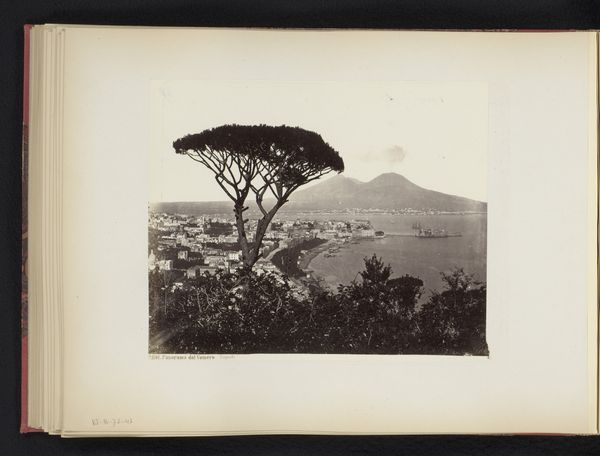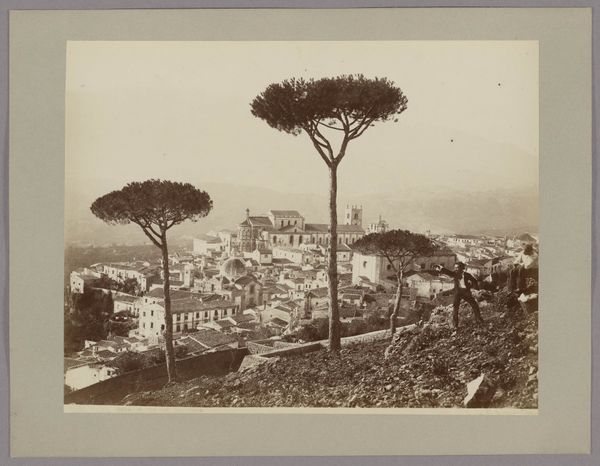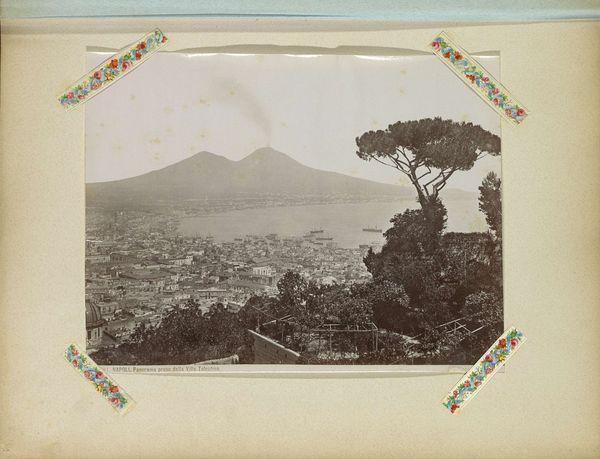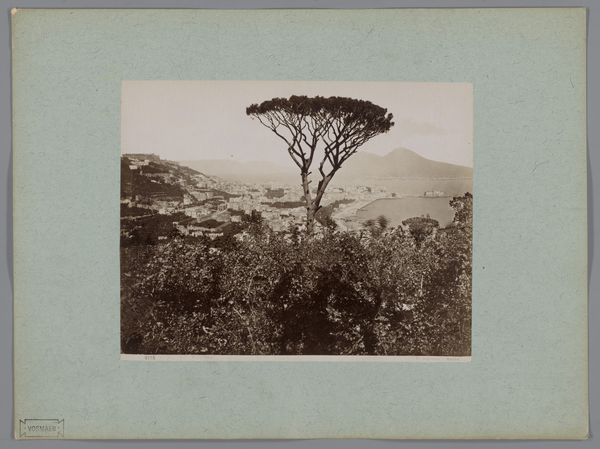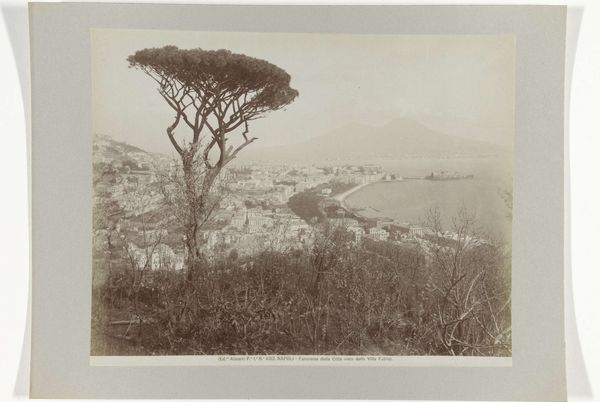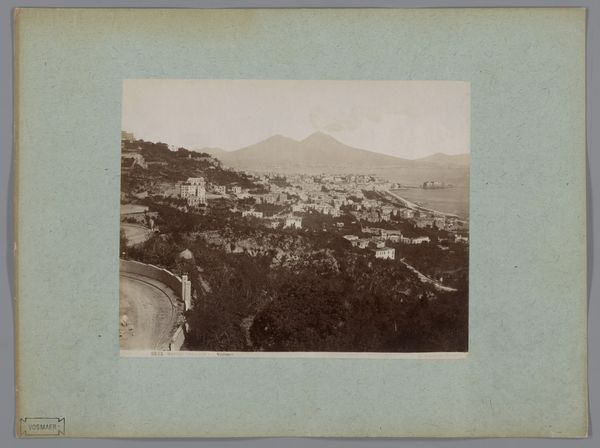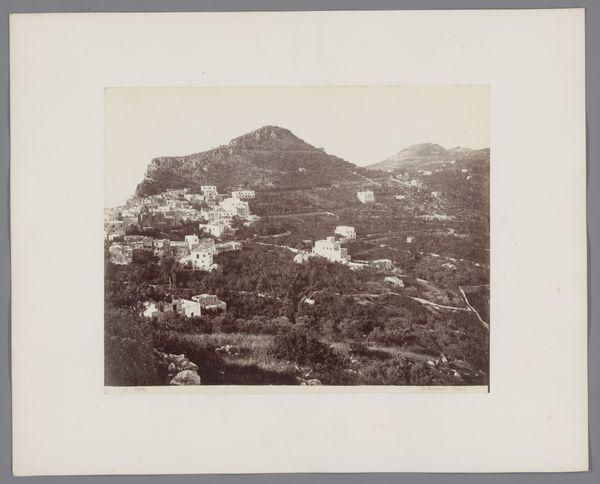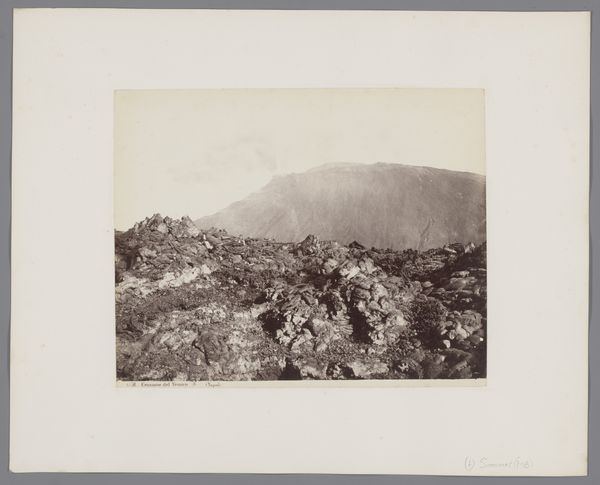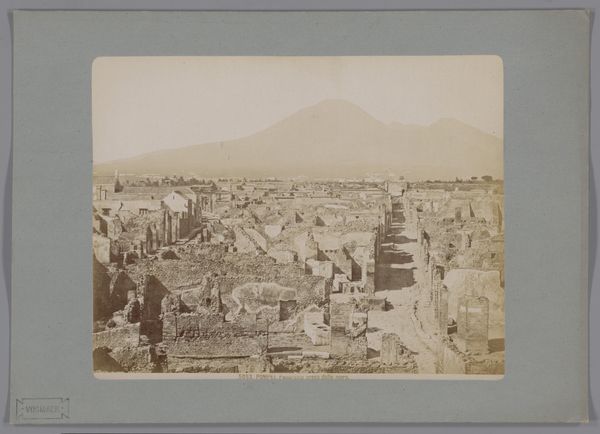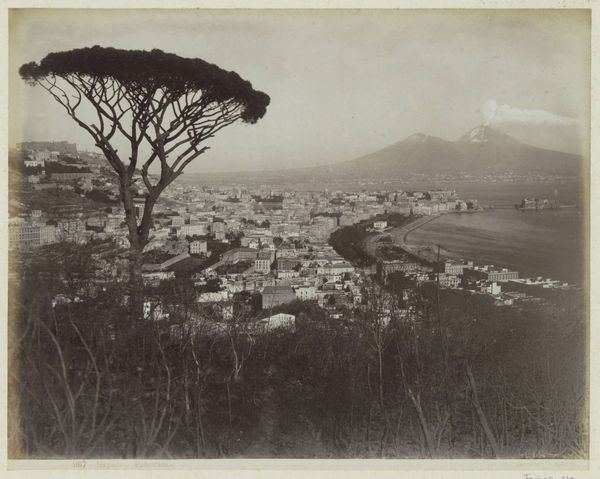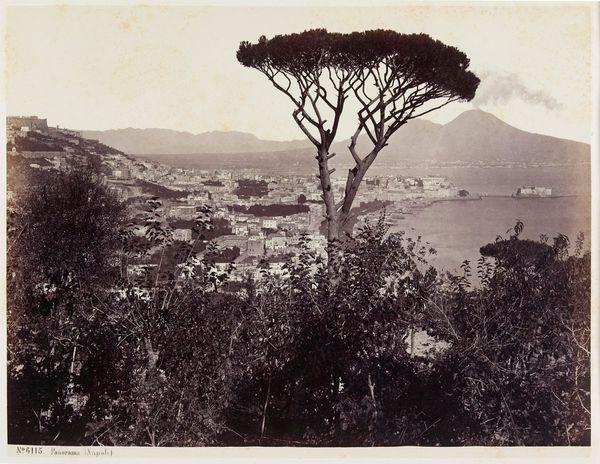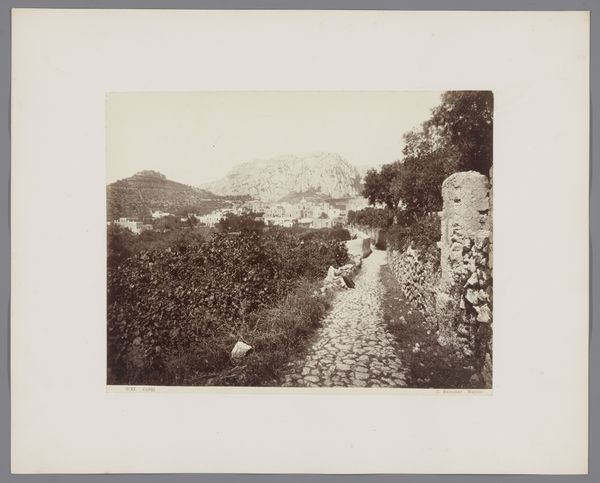
Dimensions: height 308 mm, width 383 mm
Copyright: Rijks Museum: Open Domain
Editor: This photograph, "Gezicht op Napels en de baai, Italië" taken between 1867 and 1873 by Giorgio Sommer, beautifully captures a panoramic view of Naples. It’s printed on albumen paper, giving it this warm, almost sepia-toned quality. I’m immediately struck by the composition - the city sprawling beneath the looming presence of Vesuvius. What story does this image tell from your perspective? Curator: Well, consider the rise of photography in the mid-19th century and its role in shaping European perceptions of other cultures. Images like this, widely distributed as souvenirs, helped construct a romantic vision of Italy, emphasizing its picturesque landscapes and ancient history for a burgeoning tourist market. Who had access to these photographs? What did these images say about the colonial gaze? Editor: That's a really interesting point, this photograph definitely feels like something someone would take home to remember their travels. The way the city is spread out and almost looks small. I never thought of it as a colonial gaze. Curator: Exactly. Notice the framing—the carefully arranged foliage in the foreground acting as a proscenium arch, stage-managing the "authentic" view. These compositions reinforce certain power dynamics. It's interesting to think of the image existing in relation to painted vedute--large, detailed, and idealized cityscapes popular in the 18th century, usually commissioned by wealthy Europeans. The camera, rather than replacing paint, perhaps democratized or, at least, diversified, access to these constructed visions. This wasn't objective documentation, but a carefully curated experience. Editor: So, the photograph then wasn't necessarily showing an actual honest scene of Italy, but creating a version of Italy that it was trying to sell? Like Tourism today. Curator: Precisely. Photography played a crucial role in constructing and circulating narratives, solidifying certain ideas about nations and cultures. Consider how this image was presented, bought, and consumed – those actions are vital to its meaning. Editor: I never really considered that these images would be a form of marketing, but it makes sense, seeing how everything can be bought. Thanks! This photograph tells a very different story now than when I started. Curator: Indeed! Considering the socio-political forces at play, these works give us insights beyond their immediate visual appeal. The public role of art then becomes clear and helps see the political imagery.
Comments
No comments
Be the first to comment and join the conversation on the ultimate creative platform.
